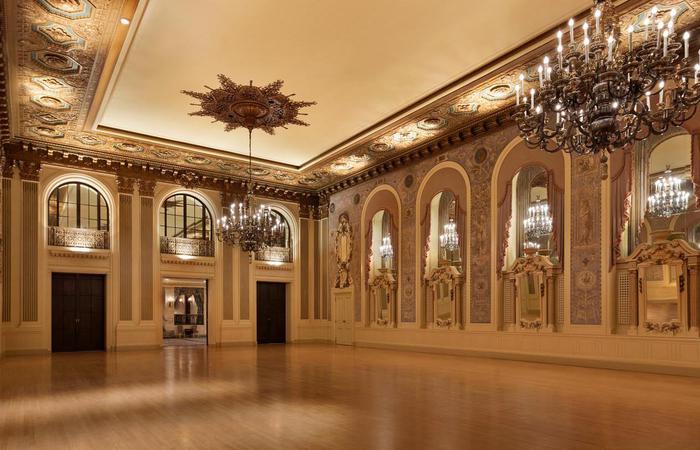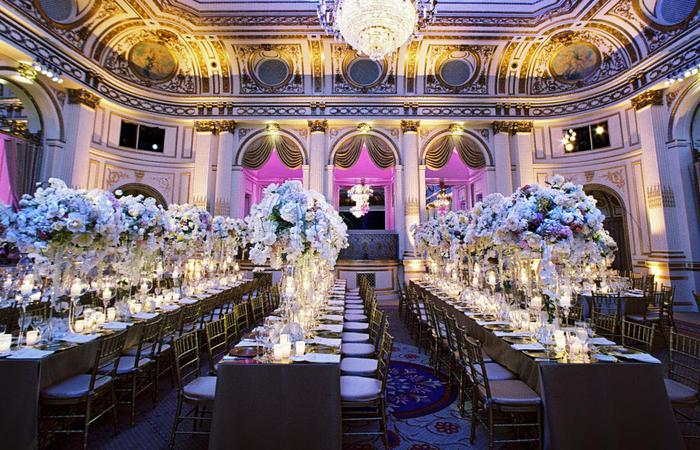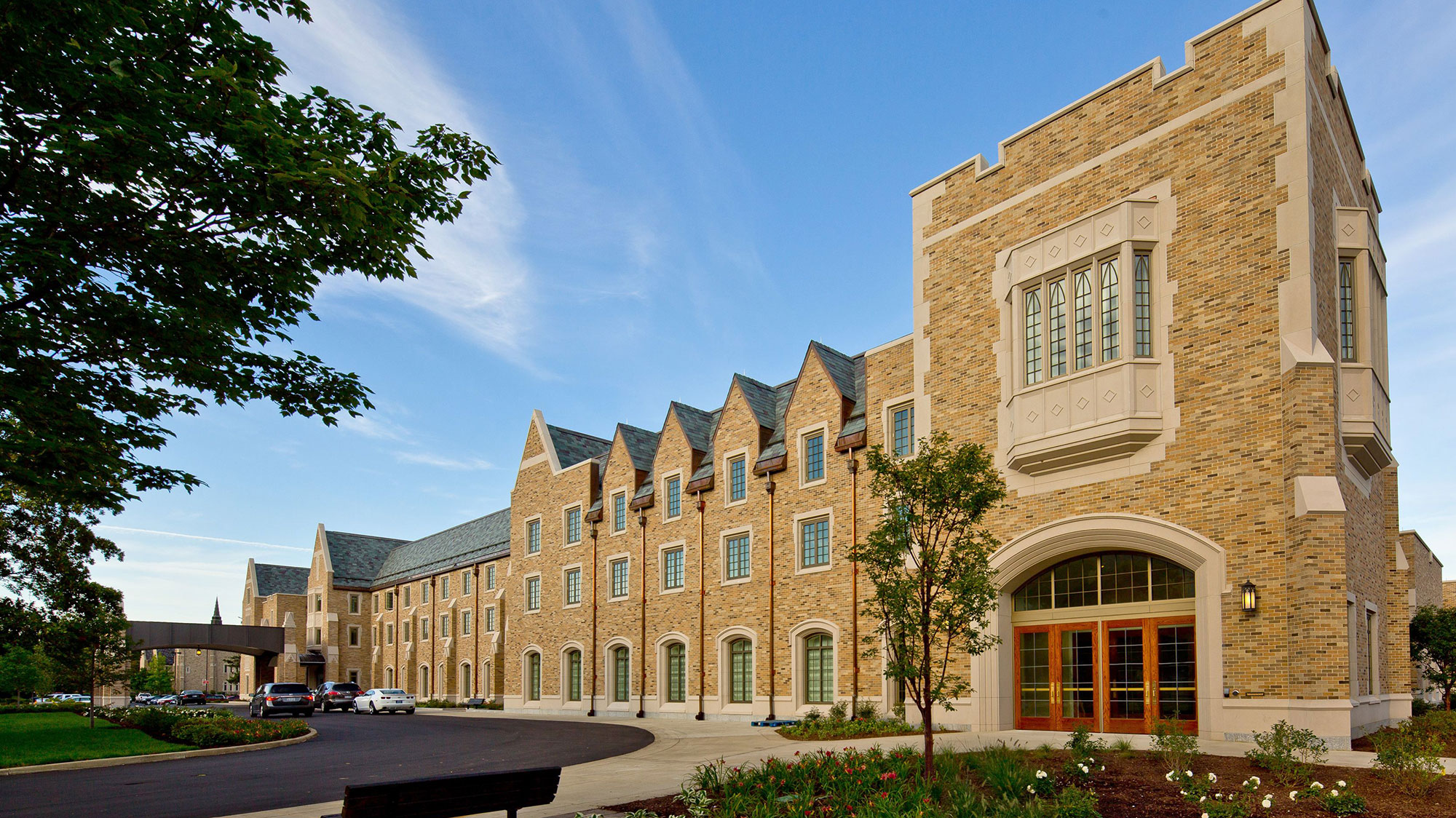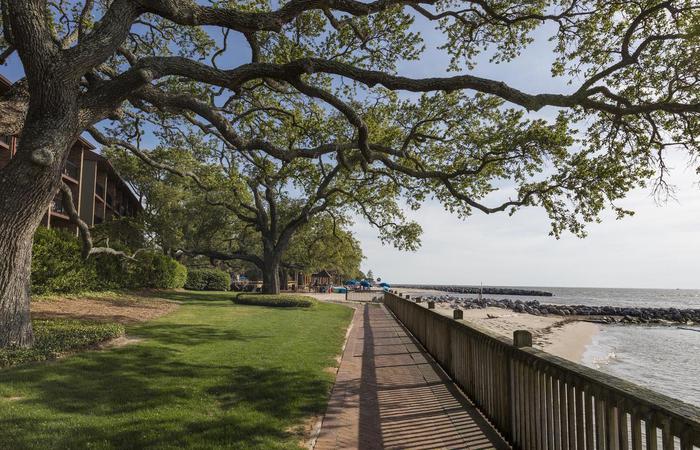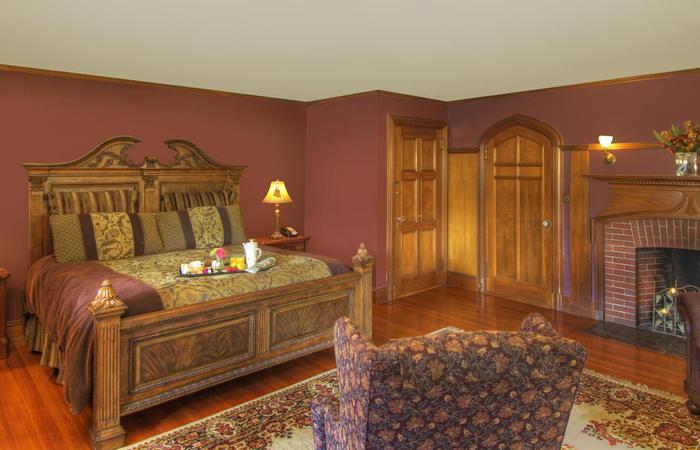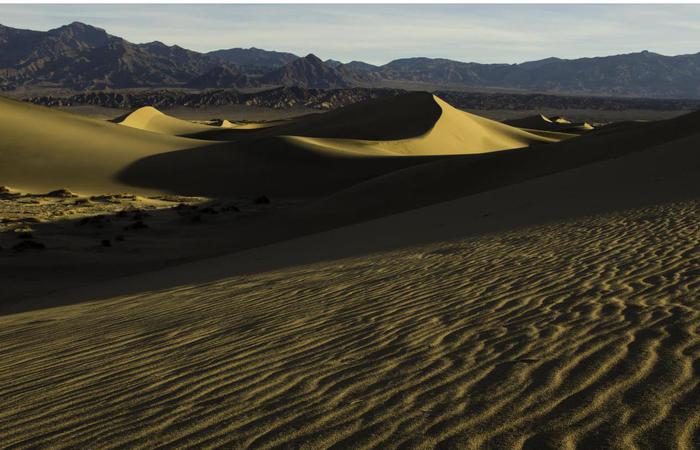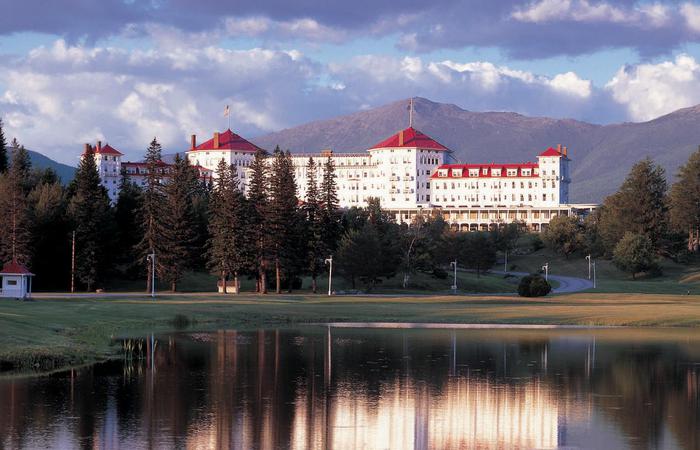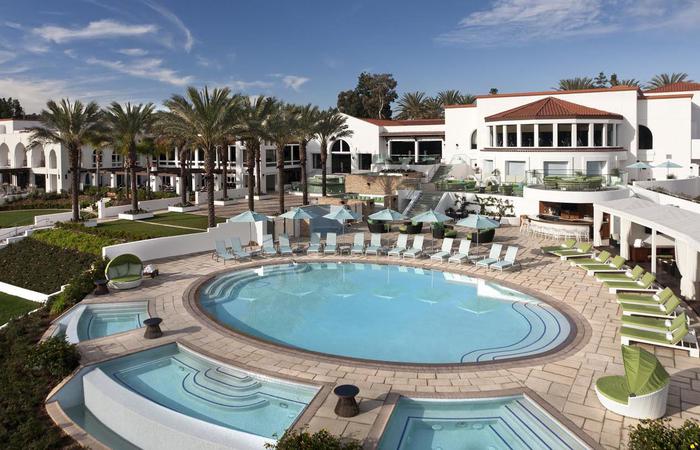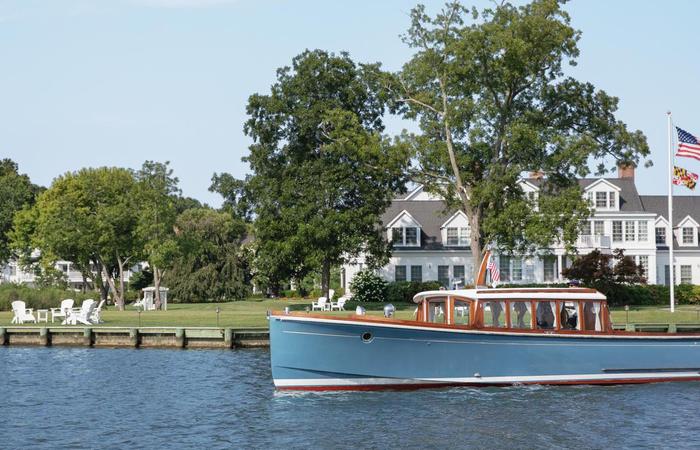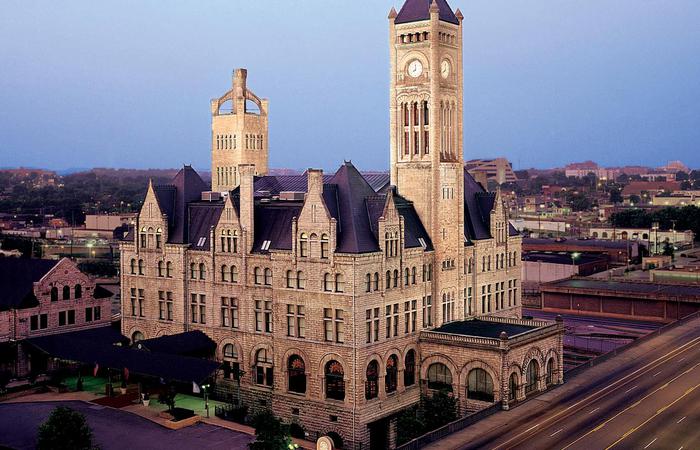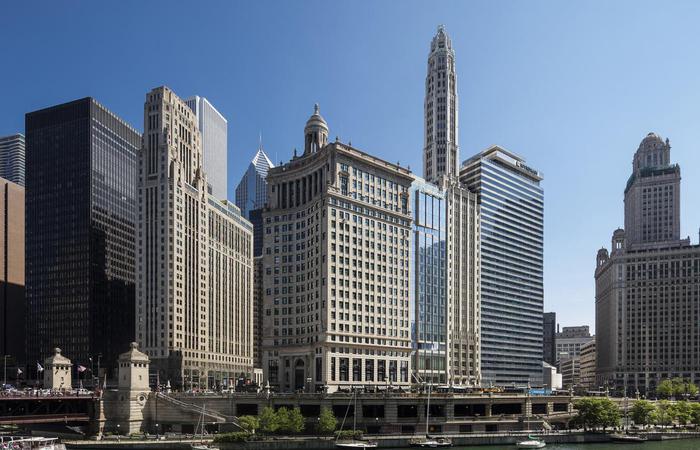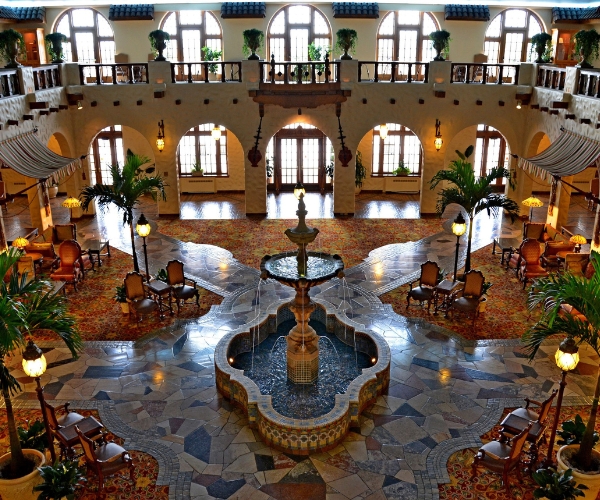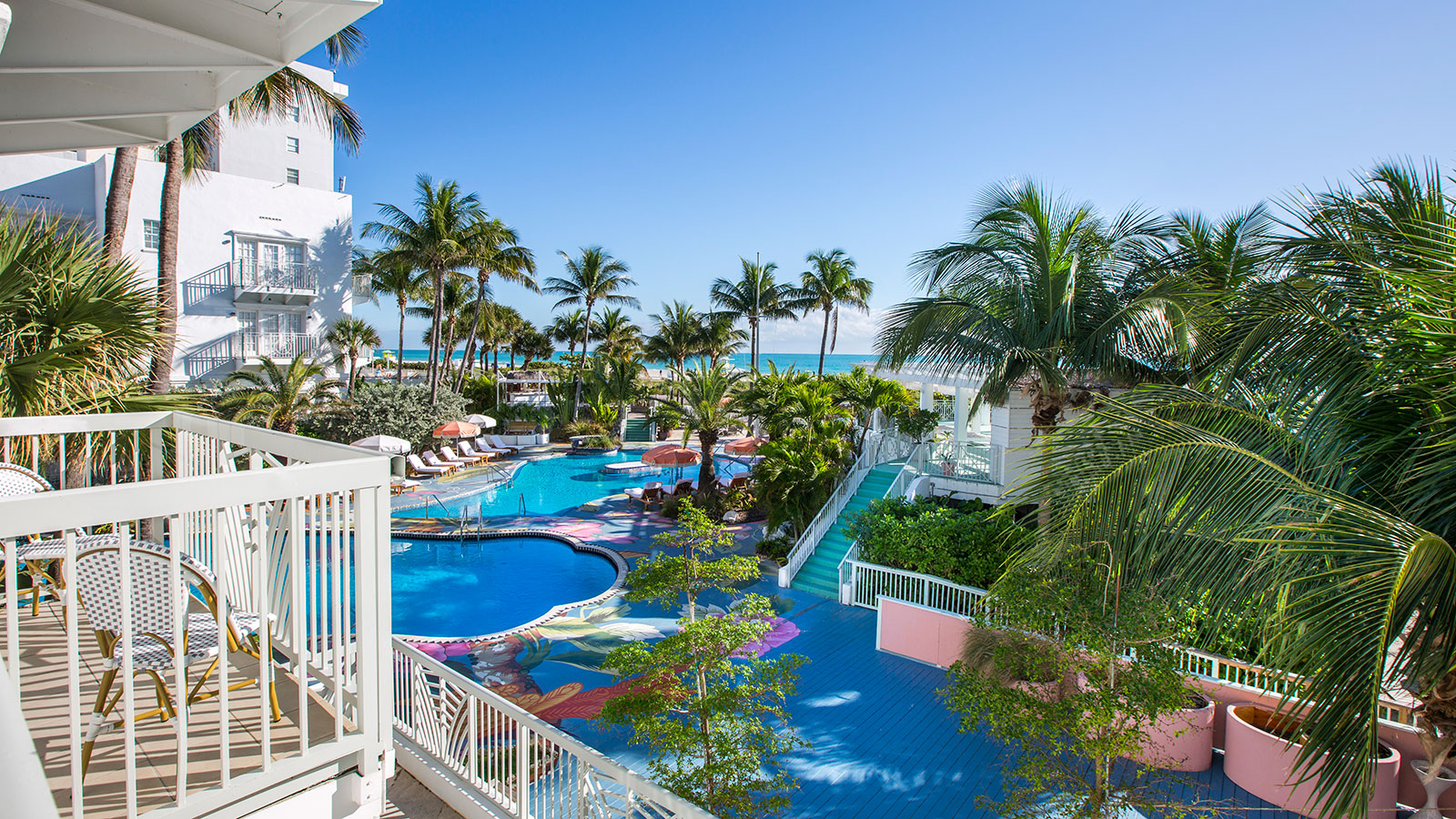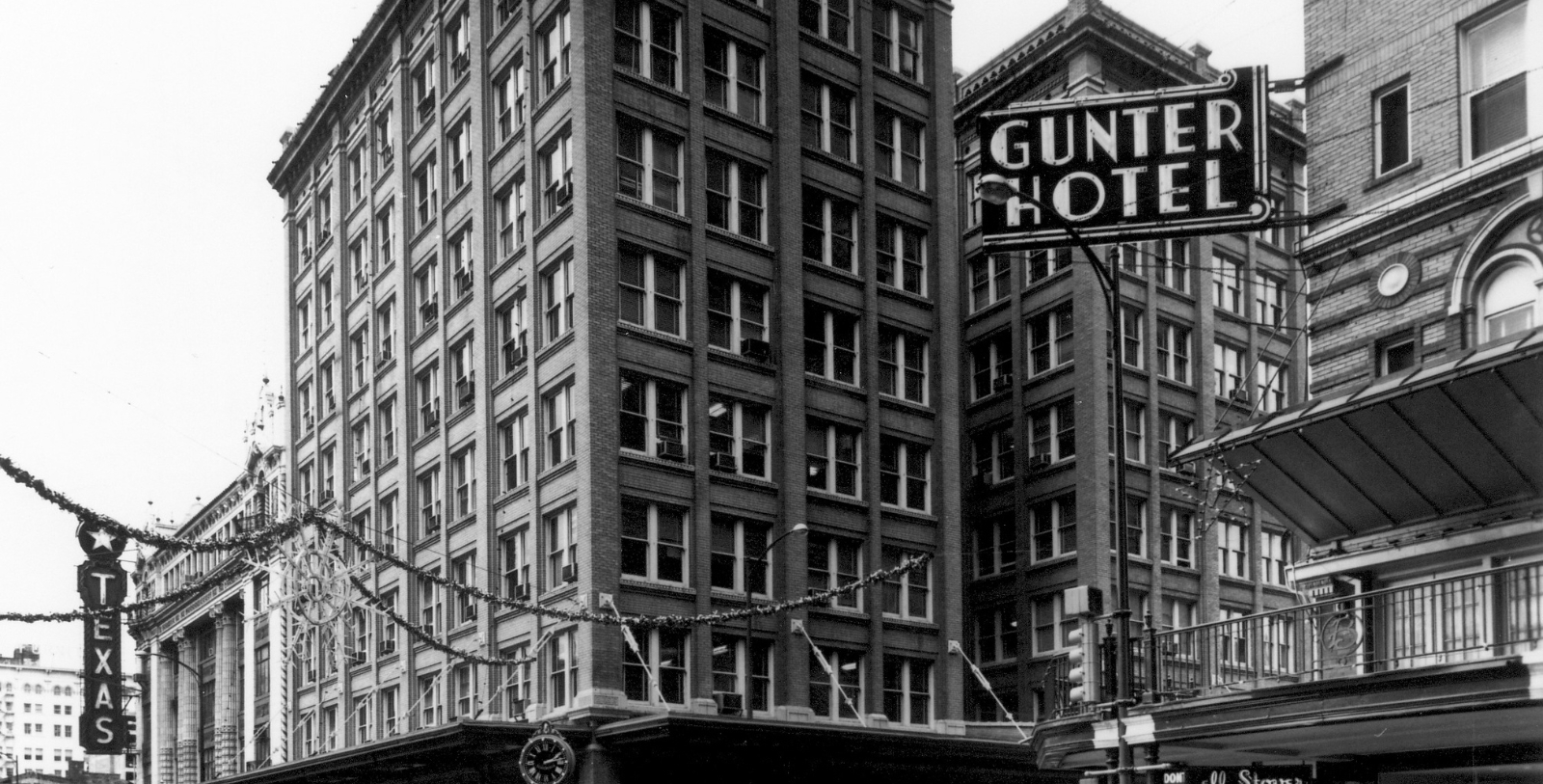Receive for Free - Discover & Explore eNewsletter monthly with advance notice of special offers, packages, and insider savings from 10% - 30% off Best Available Rates at selected hotels.
history
Discover The Gunter Hotel San Antonio Riverwalk, which has hosted prominent individuals like John Wayne, Joe DiMaggio, and First Lady Bird Johnson since the early 20th century.
The Gunter Hotel San Antonio Riverwalk, a member of Historic Hotels of America since 2025, dates to 1909.
VIEW TIMELINESan Antonio was a city on the cusp of major cultural transformations by the early 20th century. The highlight of the community's evolution was the debut of the Gunter Hotel, a gorgeous edifice that not only redefined the local skyline but also its social landscape. The structure had been the brainchild of real estate developer Lawrence J. Hart, who had long dreamed of opening an upscale hotel in downtown San Antonio. Born in Iowa during the American Civil War, Hart had moved to the city after a successful stint in Denver's real estate market. His arrival in Texas marked the start of ambitious commercial projects aimed at modernizing the city. While Hart devoted himself to many of those structures, he felt the most passionate about the work he planned to commence for the luxurious Gunter Hotel. Hart's vision for the building was clear—to create a first-class tourist hotel that would cater to the burgeoning number of people now visiting San Antonio every year. Selecting the site of a former business known as the "Mahncke Hotel," Hart began construction on the towering structure through a corporation called the "San Antonio Hotel Company." The eight-story hotel—built of steel, concrete, and tile—was a stark contrast to the timber, brick, and limestone buildings that then characterized San Antonio. Furthermore, countless San Antonians had become enthralled by its eclectic appearance, which the accomplished St. Louis-based architectural firm Mauran, Russell, and Garden crafted in collaboration with the Westlake Construction Company.
Following months of arduous work, Hart and his colleagues finally debuted their highly anticipated Gunter Hotel in 1909. They subsequently settled upon the name "Gunter" as a way of honoring Jonathan "Jot" Gunter, a prosperous local cattle rancher who had served as a pivotal investor of the San Antonio Hotel Company. Much to Hart's delight, the hotel quickly emerged as San Antonio's top destination due to its imaginative design and then-cutting-edge amenities. An incredibly diverse array of guests were reserving guestrooms regularly, such as regional business leaders and prominent statesmen. In fact, the many diverse bands of cattlemen traveling to San Antonio's famed Union Stock Yard were some of the earliest guests to stay in the Gunter Hotel. This surging popularity eventually attracted a national audience, too, with well-known celebrities like Mae West, Joe DiMaggio, Will Rogers, and Tom Mix all arriving at various points during the hotel's formative years. Even political figures of significant repute wound up residing inside the Gunter Hotel, including U.S. President Harry S. Truman! The most notable incident regarding a high-profile guest was the recording session of blues legend Robert Johnson in 1936. Johnson's recordings at the Gunter Hotel have since been considered some of the most important in the history of American music, capturing the raw emotion and talent of a musician whose influence would be felt for generations thereafter.
Amid the hotel's soaring success, established hotelier T.B. Baker purchased the Gunter Hotel and invested heavily toward maintaining its enduring appeal. Epitomizing this drive to preserve the building's reputation was an extensive remodeling that Baker completed with the help of British architect Herbert Green. The renovations saw substantial portions of the building expanded, such as the addition of three new stories and a beautiful Japanese-inspired rooftop garden. Baker and his descendants watched over the Gunter Hotel for the next several decades before selling their controlling interests to new owners in the 1950s. Although ownership would remain fluid for the rest of the century, the Gunter Hotel nonetheless persevered as one of San Antonio's preeminent holiday destinations. Indeed, illustrious luminaries continued to grace the hotel with their presence, including First Ladies Lady Bird Johnson and Nancy Reagan. Now known as "The Gunter Hotel San Antonio Riverwalk" today, this fascinating historic site has since maintained its legendary standing throughout the region. Central to the preservation of its reputation has been the efforts of its current owners, Axle Capital Group, and their partners at Evolution Hospitality. Originally acquiring the location back in 2012, the two organizations have recently overseen a masterful multimillion-dollar restoration that has brilliantly revitalized the hotel's architectural integrity. Set to reopen once again in 2025, the future of The Gunter Hotel San Antonio Riverwalk has never looked brighter.
-
About the Location +
Referring to the location as "Yanaguana" (or "refreshing waters"), the Native American Payaya were the first people to inhabit the site of present-day San Antonio. They specifically lived in relative isolation as hunter-gatherers, with the San Antonio River providing a source of sustenance. But their historic seclusion ended once Spanish explorers began charting the region. The most significant expedition to take place was the one headed by Pedro de Aguirre, Isidro de Espinosa, and Antonio de Olivares in 1709. The latter two men were Franciscan monks, who planned to establish several religious missions throughout the surrounding valley. Olivares wrote directly to the Viceroy of New Spain—the highest-ranking Spanish official in the Americas at the time—urging him to prioritize its settlement as soon as possible. Fortunately for Olivares, his pleas eventually came to fruition when the colonial Spanish government finally commissioned the creation of an outpost along the banks of the river in 1718. Central to Olivares' new community was a sprawling mission complex that he had raised with the help of the local Payaya. Together, the group gradually constructed the rudimentary compound out of mud, brush, and straw over several weeks. Olivares then chose to name the facility "Misión San Antonio de Valero" in honor of Saint Anthony of Padua.
Olivares had received additional assistance from Martín de Alarcón, governor for the province of Spanish Texas. Interested in using the nascent mission as a buttress against potential foreign military incursions from French Louisiana, Alarcón proceeded to construct a fort named the "Presidio de Béxar" on the opposite riverbank. At first, only a few friars and their Native American converts inhabited the compound alongside a small group of colonial soldiers. Nevertheless, the Spanish Crown directed a few dozen families to settle the site, with the first batch arriving to create the neighboring village of "San Fernando de Béxar" in 1731. All three destinations would gradually emerge as the most important settlements in Spanish Texas, given their proximity to the San Antonio River and the Camino Real trail that led deeper into the Texan wilderness. In fact, San Fernando de Béxar became the official capital for the whole province in 1773! The town expanded exponentially as a result, reaching the size of a real city by the dawn of the 19th century. Driving this growth was the arrival of the first Euro-American settlers, thanks in part to the politicking of Stephen Austin. (European immigrants would later supplement the population, including thousands of Germans.)
Now largely referred to as "San Antonio," the community was then gripped with patriotic fervor amid the greater backdrop of the Mexican Wars of Independence. Some of its leading citizens even helped draft the first Federal Constitution for the newly created state of Mexico in 1824. But this desire for self-government grew more intense in San Antonio once military general Antonio López de Santa Anna abolished the constitution not long thereafter. The city's residents thus eagerly supported the Texas Revolution when it erupted in the 1830s. San Antonio even became a battlefield, with its militia driving out the local Mexican garrison during the Siege of Béxar. While the rebels held onto the city for some time, general Santa Anna arranged a counterattack in 1836. The remaining Texan forces in turn retreated into the Misión San Antonio de Valero, which had become known as the "Alamo." Legendary figures like James Bowie and Davy Crockett fought the Mexican Army in the subsequent Battle of the Alamo, dying to a single man after holding out against overwhelming odds for 13 days. Seen as martyrs by the rest of the movement, their sacrifice galvanized their allies to defeat General Santa Anna at the climactic Battle of San Jacinto a month later.
San Antonio would continue to be one of the region's most important metropolises, especially after Texas joined the United States in the 1840s. But San Antonio had become a bastion for the famous Texas ranching trade, due to its role as the main embarkation point for the Chisolm Trail. The city has since maintained its revered reputation well into the present, anchoring the southwestern corner of a prolific megaregion called the "Texas Triangle." However, its distinctive cultural identity has attracted countless tourists every year, all of whom are eager to experience its unique heritage. Many fascinating attractions are located within San Antonio as such, including the Tower of the Americas, HemisFair Park, the San Antonio Museum of Art, and the San Antonio River Walk. Of course, the Alamo remains the city's most celebrated historic destination, bearing the distinction of being both a U.S. National Historic Landmark and a UNESCO World Heritage Site! (Four other missions located outside of San Antonio are also part of a greater UNESCO World Heritage Site known as the "San Antonio Missions National Historical Park.") Few other places in the United States can truly offer such a wonderful experience than San Antonio.
-
About the Architecture +
The Gunter Hotel San Antonio Riverwalk possesses a unique architectural style that can best be described as "eclectic." Dating to the mid-19th and early 20th centuries, historians today consider "eclecticism" to be part of a much larger movement to fuse together a variety of historical designs. Earlier in the 1800s, architects—particularly those in Europe—decided to rely upon their own loose interpretations of historical architecture whenever they attempted to replicate it. Such a practice appeared within styles like Gothic Revival, Italianate, and Second Empire architecture. At the height of the Gilded Age, those architects decided to use historic architecture more literally when developing a building. A few architects went a step further by combining certain historical styles together to achieve something uniquely beautiful. And in some cases, those individuals felt inspired to add a new historical form onto a building that they were renovating—just like The Gunter Hotel San Antonio Riverwalk. The architects felt that joining such architectural forms together would give them a new avenue of expression that they otherwise did not have at the time. They even believed that they had stayed true to the earlier forms, so long as their designs perfectly replicated whatever it was they wanted to mimic.
In Europe, this approach first appeared as a rehash of Gothic Revival-style known as "Collegiate Gothic." The European architects used such a mentality to influence the unfolding philosophies of the Beaux-Arts school of design and the emerging Renaissance Revival-style. Many architects in America followed suit, the most notable of which being Richard Morris Hunt and Charles Follen McKim. The American architects who embraced "eclecticism" were at first interested in the country's colonial architecture. Much of the desire to return to the period was born from the revived interest in American culture brought on by the Centennial Exposition of 1876. More specifically, pride in preserving the nation's heritage inspired the architects to perfect the design principles of their colonial forebearers in new and intriguing ways. This interest gradually splintered into other revival styles though, like Spanish Colonial and Tudor Revival. Some Americans even infused the approach with the popular Beaux-Arts aesthetics of France, such as Hunt and McKim. However, the birth of Modernism in the 1920s and 1930s eventually ended the worldwide love affair with "eclecticism," for architects throughout the West became more enchanted with the ideas of modernity, technology, and progress.
-
Famous Historic Events +
Robert Johnson's Blue Recordings (1936): Few names resonate as profoundly in American musical history than Robert Johnson. Born in the early 20th century, Johnson's life was a tapestry woven with the threads of hardship, talent, and an unyielding passion for music. His journey from the dusty roads of Mississippi to the recording studios of Texas (and beyond) is a testament to the enduring power of the blues as an art form. Robert Johnson's early years were shrouded in mystery though, much like the haunting melodies that he would later create. Raised near Hazelhurst, Mississippi, Johnson was the eleventh child of Julia Major Dodds. His childhood was marked by frequent relocations, eventually settling with his mother and stepfather near Robinsonville and Tunica. It was here that Johnson's admiration for the guitar began, which became his constant companion as a teenager. By his early twenties, he was a familiar face at the local juke joints, where his performances began to attract broader national attention. Johnson's repertoire was eclectic, blending the popular hits of the day with his own unique interpretations. His ability to adapt and innovate within the genre set him apart from his contemporaries, making him a distinctive act few others could replicate. The pivotal moment in Johnson's career thus came in 1936, when he crossed paths with H.C. Speir, a record retailer from Jackson, Mississippi.
Speir in turn introduced Johnson to Ernie Oertle, an agent for the American Record Company. This connection led Johnson to the Gunter Hotel in San Antonio, Texas, where he would make his first recordings. The subsequent Gunter sessions, held in November 1936, were a marathon of creativity. Over several weeks, Johnson recorded a series of tracks that would become the cornerstone of his legacy. Among the songs recorded during these sessions were his most notable ballads "Kindhearted Woman Blues," "Sweet Home Chicago," and "Cross Road Blues." Each track was a representation of Johnson's own life experiences, imbued with a raw emotional intensity that resonated deeply with listeners. Despite the challenges he faced, Johnson's dedication to his craft never wavered. The recordings at the Gunter Hotel were groundbreaking as well, not only for their musical content but for the innovative recording techniques employed. The use of a new thin type of master record allowed for greater fidelity and durability, ensuring that Johnson's music would endure for generations to come. But while the technical advancements and the quality of his work were profound, Johnson's initial releases saw modest commercial success. For instance, his first release, "Terraplane Blues," sold between 3,000 and 4,000 copies, which was a respectable number for a rural, African American blues artist at the time.
Unfortunately, Robert Johnson's life was tragically cut short in 1938. The exact location of his grave remains unknown, with markers in multiple cemeteries throughout Mississippi. Nevertheless, in death, Johnson's influence started to grow, reaching its climax upon the reissue of his recording on the LP "King of the Delta Blues Singers" in 1961. The release reintroduced Johnson's talent to a new host of musicians, including renowned acts like the Rolling Stones, Eric Clapton, and Led Zeppelin, who would all cite him as a major influence. Eric Clapton even once wrote: "I have never found anything more deeply soulful than Robert Johnson. His music remains the most powerful cry that I think you can find in the human voice." This sentiment has since captured the essence of Johnson's legacy in the present. Forged from the depths of personal struggle and societal oppression, his music has continued to transcend time and place. It speaks to the universal human experience, echoing the pain, joy, and resilience that define the human condition. Robert Johnson's story is truly one of triumph over adversity, and of a man who left an indelible mark on the world of music—regardless of the odds. His recordings at the Gunter Hotel are more than just songs; they are a symbol to the enduring power of the blues and a reminder of the profound impact one individual can have on America’s collective cultural landscape.
-
Famous Historic Guests +
Robert Johnson, blues musician regarded today as one of the most influential songwriters of the 20th century.
Mae West, actress known for her roles in She Done Him Wrong, I'm No Angel, and My Little Chickadee.
Tom Mix, actor best remembered for his role in such films as The Miracle Rider, Just Tony, and The Great K & A Train Robbery.
Roy Rogers, actor best remembered for co-starring alongside his wife, Dale Evans, on The Roy Rogers Show.
Will Rogers, actor known for his roles in such films like Judge Priest, In Old Kentucky, and Steamboat Round the Bend.
John Wayne, actor known for his roles in The Man Who Shot Liberty Valance, True Grit, and The Longest Day.
Jane Withers, actress best remembered for her role of Joy Smythe in the film Bright Eyes.
Joe DiMaggio, outfielder for the New York Yankees best remembered as the "Yankee Clipper."
Gene Tunney, former boxing world heavyweight and American lightweight champion during the 1920s.
Sam Rayburn, 43rd Speaker of the U.S. House of Representatives (1955 – 1961)
Lady Bird Johnson, First Lady to former U.S. President Lyndon B. Johnson (1963 – 1969)
Nancy Reagan, First Lady to former U.S. President Ronald Reagan (1981 – 1989)
Harry S. Truman, 33rd President of the United States (1945 – 1953)


